Quality Inspection Guide for Enamel-insulated Wire
Updated : Feb. 20, 2024Dimensional Measurement
Inspection Tools
Micrometer caliper with an accuracy that complies with the following specifications: a lever micrometer with a dial indicating an error of 1μ. Measurements should be taken at two points spaced 1 meter apart, covering three surfaces, with a total of six measurement values. The average value is taken as the final measurement result.
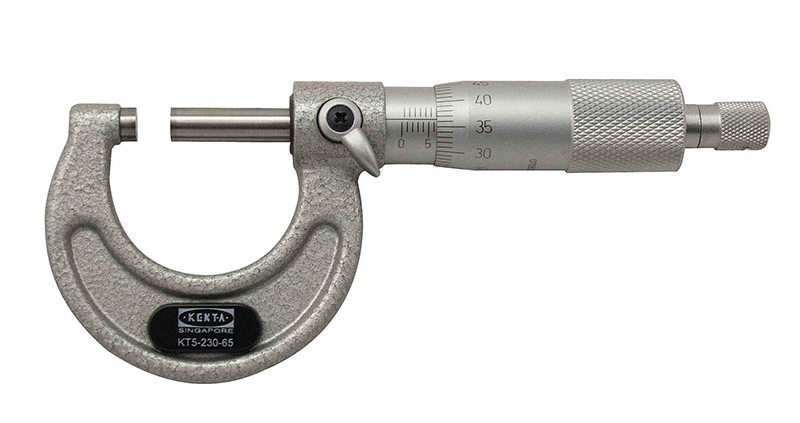
Conductor Diameter Measurement and Allowable Tolerance
The allowable tolerance for bare conductors refers to the permissible deviation between the actual diameter of the bare conductor and the specified value.
From a practical standpoint, a smaller tolerance is preferable, aiding in the calculation of resistance, turns, and other factors during design. However, during manufacturing, the mold holes may undergo wear and deformation during the stretching process. If the tolerance requirements are too stringent, molds may need frequent replacement, leading to difficulties in both the manufacturing process and mold supply.
Conductor Cross-Sectional Eccentricity
Refers to the difference between the maximum and minimum measured values of the diameter on the same cross-section of the conductor. Non-compliance in eccentricity detection can lead to color variations (yin and yang surfaces) in the enamel-coated wire.
Maximum Outer Diameter and Minimum Enamel Thickness
Exceeding the maximum outer diameter tolerance may increase the coil size, making it unable to fit during winding. Insufficient enamel thickness may result in pinholes, reduced voltage resistance, susceptibility to scratching, compromised chemical resistance, diminished resistance to aging, and may lead to the production of defective items.
Mechanical Performance Testing
Enamel-coated wire is subjected to various mechanical forces during the winding of motor coils and the operation of electrical products, including tension, friction, and bending forces. Non-compliant enamel-coated wire may lead to issues such as breakage, thin cross-sections, increased resistance, enamel film cracking, and loss of insulation performance.
Elongation Testing
After stretching, the adhesion, scratch resistance, elasticity, thermal shock resistance, and solvent resistance of enamel-coated wire may decrease. The elongation rate of enamel-coated wire is influenced by various factors, such as impurity elements hindering the sliding between grains, making the lattice less deformable, which may lead to wire breakage during elongation.
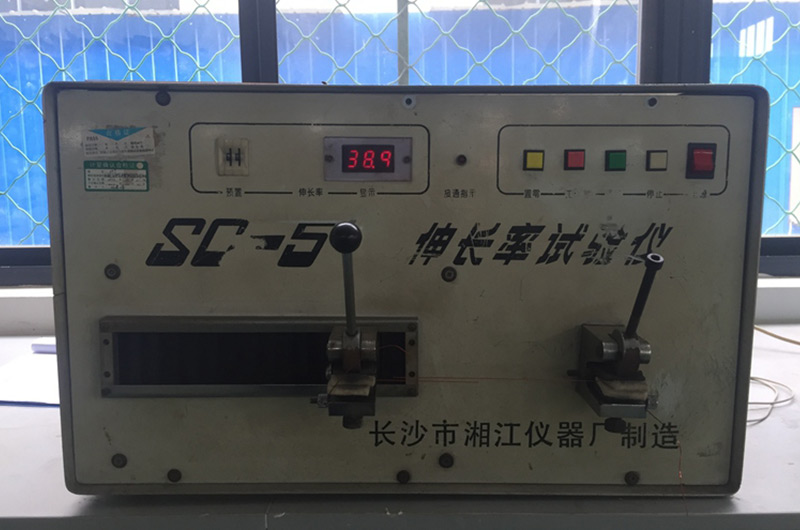
Resilience Angle Testing
During coil winding, if the flexibility of the enamel-coated wire is poor, it may result in springback deformation, affecting the diameter and shape of the coil, thereby impacting the framework's accommodating capacity.
Several factors influence the resilience angle of enamel-coated wire:
- Annealing degree
- Enamel film thickness
- Oven temperature
Factors affecting the test results of the resilience angle:
- Winding speed
- Free rebound
- Winding rod diameter
- Wire diameter
- Load
- Tension
- Pointer length
Flexibility and Adhesion of Enamel Film
The flexibility and adhesion of the enamel-coated wire are critical performance indicators during coil winding. Through tests such as winding and stretching, the elasticity and adhesion of the enamel film can be evaluated, ensuring that the enamel-coated wire will not crack or break during use.
Factors influencing the flexibility and adhesion of the enamel film include:
- Elasticity of the enamel film
- Cleanliness of the wire surface
- Degree of polymer chain curling
- Excessive cross-linking
- Stretching and winding speed
Scratch Resistance of Enamel Film
Enamel-coated wire is subjected to friction during use, so it needs to have good scratch resistance. Scratch resistance testing can be used to evaluate the performance of enamel-coated wire, ensuring that it meets the requirements of use.
Factors influencing the scratch resistance of the enamel film include:
- Rigidity of the enamel film
- Coefficient of friction
- Wire diameter
- Thickness of the enamel film
- Process parameters
Heat Resistance Performance
The heat resistance performance of enamel-coated wire is crucial for electrical equipment, especially for motors and components with high temperature rise requirements. This performance directly impacts equipment design and operational effectiveness. By selecting enamel-coated wire with higher heat resistance and matching insulation materials, it is possible to achieve greater power output without changing the structure or, alternatively, reduce the overall size, weight, and consumption of non-ferrous metals and other materials while maintaining the same power output.
Thermal Aging Testing
The heat performance of enamel-coated wire is assessed through a semi-annual to annual UL test. Throughout the process of enamel formulation, film formation, and enamel aging, the reactions of polymers can lead to a decline in performance. Under certain furnace temperature conditions, adjusting the line speed can affect the evaporation of enamel solvent and baking time. The key is to maintain an appropriate line speed range to ensure proper heat aging performance.
Thermal Shock Testing
The heat resistance and shock resistance of enamel-coated wire primarily evaluate the performance of the enamel film under mechanical stress and high-temperature conditions. Internal stress is formed within the enamel film during stretching, and it contracts after heating. The contraction of the enamel film after heating is hindered by the adhesion to the conductor, posing a challenge to the strength of the enamel film.
Factors affecting the enamel film strength and thermal shrinkage performance of enamel-coated wire include:
- Quality of the enamel
- Proportion of raw materials
- Baking temperature
- Thickness of the enamel film
Heat-Softening Breakdown Testing
Heat-softening breakdown testing is commonly used to assess the ability of enamel-coated wire to deform under high temperature and mechanical stress, considering thermal, electrical, and mechanical aspects. In a coil, the lower enamel-coated wire may experience thinning of the enamel film due to the tension from the upper enamel-coated wire, leading to short circuits between turns.
Factors affecting the heat-softening breakdown performance of the enamel film include:
- Molecular structure
- Type of enamel film
- Baking time
- Load weight
- Initial temperature
- Heating rate
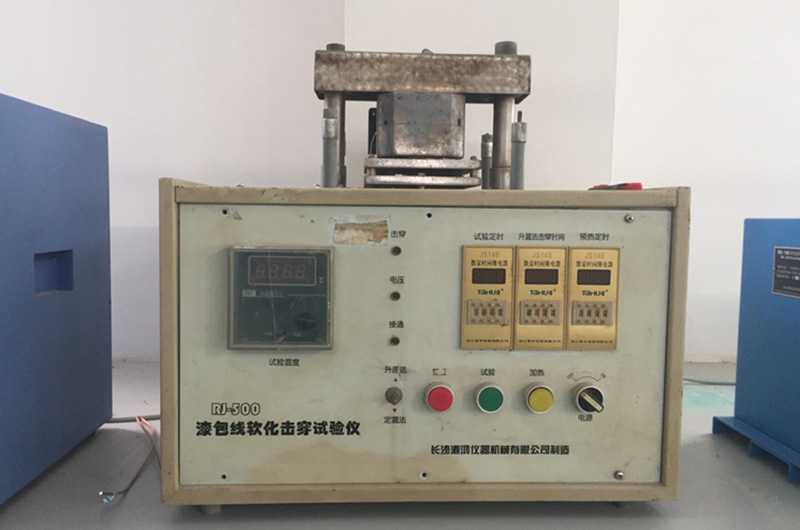
Electrical Performance Testing
The thin enamel film on enameled wire must allow the passage of current circulating along the core wire within the coil to ensure the electromagnetic induction that enables the functioning of motors and electrical devices. Insufficient dielectric performance of the enamel film can lead to short circuits in the coil, rendering the motor or electrical device unusable.
Direct Current (DC) Resistance
The resistance value of enameled wire is crucial to maintaining the total resistance of the coil within the designed tolerance. Excessive or insufficient resistance can lead to variations in the total resistance, affecting the balance of three-phase motor voltages and the temperature rise of miniature motors. It can also pose challenges in the winding of instrument coils.
The resistance of a conductor is directly proportional to its length and inversely proportional to its cross-sectional area. Impurities in the conductor and the degree of annealing can affect resistance.
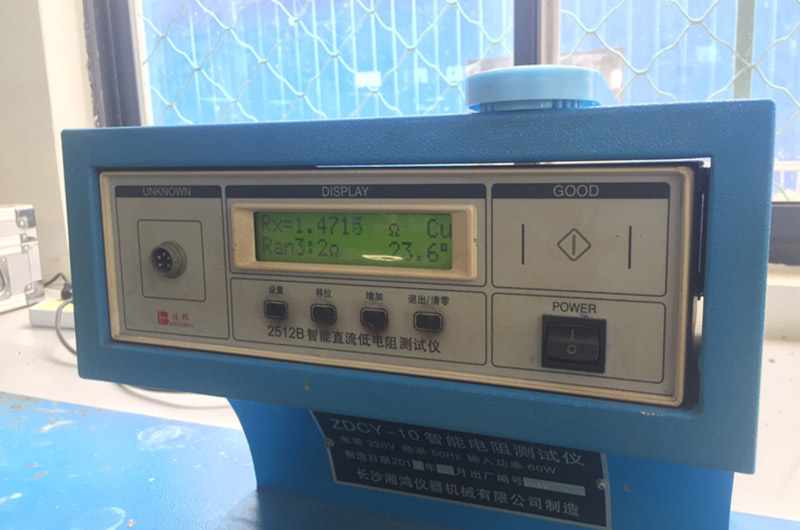
Breakdown Voltage
Under a strong electric field, bound electrons in the polymer are excited to become free electrons, increasing conductivity. When the electric field intensity exceeds a certain value, the polymer loses its insulating properties, leading to breakdown, known as breakdown voltage. The heat generated during breakdown can cause thermal destruction of the polymer, resulting in melting and charring.
Factors influencing breakdown voltage include:
- Enamel film thickness
- Eccentricity
- Degree of curing
- External impurities in the enamel
In breakdown voltage testing, factors such as the number of twists, duration of applied voltage, rate of voltage increase, elongation of the enamel film, and temperature during pressure application can affect the final test data.
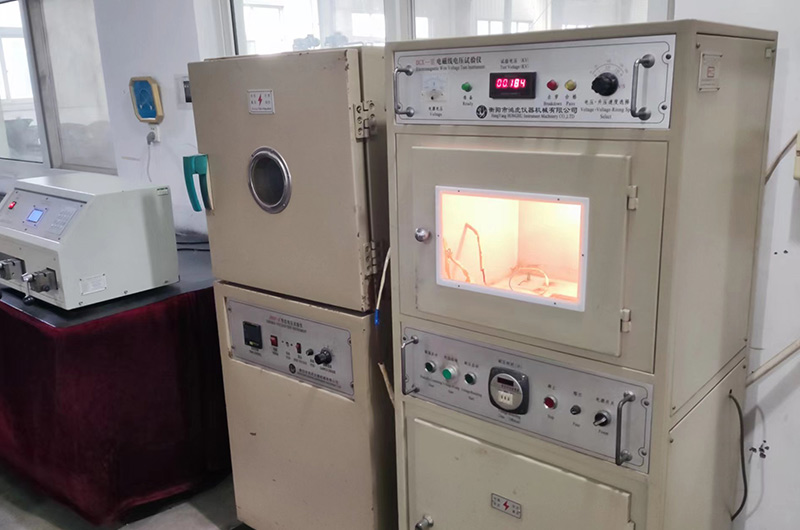
Pinhole Formation
In the winding process of fine enameled wire with a high number of turns in a coil, tightly wound turns result in increased contact surfaces between wires. If there are numerous pinholes in the enamel coating of the enameled wire, overlapping pinholes between two turns may occur, leading to a short circuit.
Factors influencing pinhole formation include: raw materials, conductors, the production process, and test conditions.
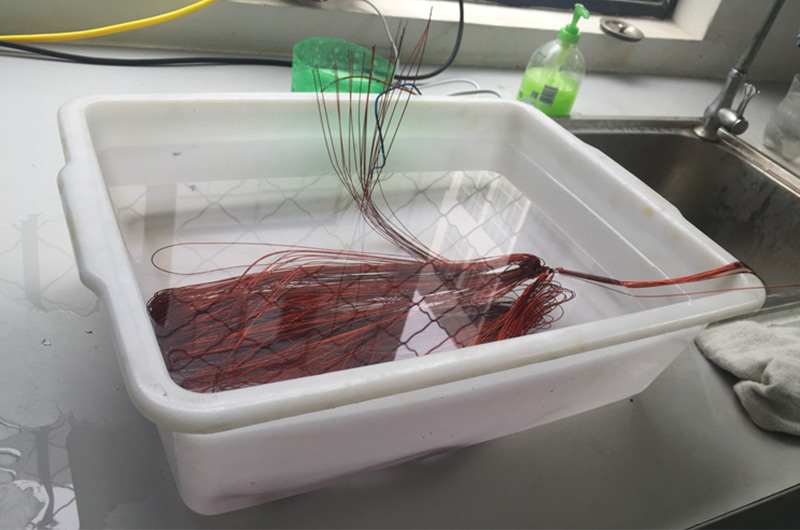
Chemical Resistance
Enameled wire needs to exhibit excellent chemical resistance, covering resistance to acids, alkalis, salt spray, humidity, oils, solvents, refrigerants, radiation, and various other chemical substances. Through testing, the chemical resistance of enameled wire can be assessed to ensure it withstands corrosion and dissolution during use.
Factors influencing the chemical resistance of the enamel coating include:
- Characteristics of the enamel coating
- Solvents used in impregnating enamel
- Impregnation process
Chalco Enameled Aluminum Flat Wire Hot selling product
-
130/155 enameled aluminum flat wire
Temperature resistance: 130°C
Heat shock resistance: 150°C
-
180 enameled aluminum flat wire
Temperature resistance: 180°C
Heat shock resistance: 200°C
-
200 enameled aluminum flat wire
Temperature resistance: 200°C
Heat shock resistance: 220°C
-
Copper-Clad Enamelled Wire
Lightweight, excellent conductivity
Easy to process
-
Heavy Coating Enameled Wire
Base coat thickness: 0.5-0.8mm
Second coat thickness: 1.2mm
-
Extra-Large Enameled Flat Wire
Maximum dimensions: 3.5*35mm
Suitable for vertical winding
-
Extra Large Enamelled Round Wire
Maximum diameter: 3.0-15mm
Suitable for heavy winding on large spools
-
Solderable Enamel Wire
No need for paint removal
Can be directly soldered
-
Self-Adhesive Enamel Wire
Alcohol-based heat bonding
Provides a more compact winding
-
Arc-Resistant Enamel Wire
Excellent corona resistance
Outstanding dielectric performance
-
High-Temperature Resistant Wire
Voltage resistance: 5-12KV
The enamel film does not crack under 350℃ baking
-
Micro Enamel Wire
Minimum specification: 0.2*1mm
High slot filling rate




